
So you thought you could save some money on your MacBook Pro or Air by opting for a smaller storage configuration, and now you’re regretting that decision. Fortunately, you don’t need to buy a whole new notebook to add more storage.
Apple hardware is built to last — there’s a good chance your MacBook has many years left in it. So whether you decide to cheap out or spend some serious cash on a substantial upgrade, you’ll be making the most of the hardware you already have.
What About External Drives?
You may already have an external hard drive. They’re handy for regularly backing up your Mac using Time Machine, but you can also partition your backup disk and use it as a regular drive too. These relatively cheap storage accessories offer high capacities, they’re relatively cheap, much smaller than they used to be, and many no longer require separate power supplies and instead draw power via USB.
While the physical size of external storage and its price has shrunk over the years, these drives are still fragile and slow. Hard disc drives still use an arm-and-platter arrangement, which means they need time to “spin up” and are prone to mechanical failure. External hard drives don’t stand up well to being dropped, you’ve got to carry them with you, and when in use they occupy one of the few USB ports your MacBook has.
Storing data on external drives works in certain situations, like large media files that aren’t part of your libraries, archived documents and project files, RAW photos, backups, and disk images. While you can span your iTunes library across multiple volumes using an app like TuneSpan, you can’t do the same for your ever-expanding photos library without moving the whole thing.
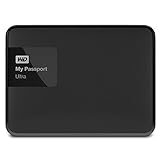
WD 1TB Black My Passport Ultra Portable External Hard Drive - USB 3.0 - WDBGPU0010BBK-NESN
Secure portable storage with up to 3TB capacity
Price: $54.23
Price: $54.23
Bottom line: A slow but cost-effective way of adding a large amount of storage to your MacBook. You’ll have to carry it with you and it’s fragile and susceptible to failing, so you might want to keep your external drive for backups, archives, and home use.
SD Card Solutions
Your MacBook comes with an SD card slot, which allows you to quickly transfer media without plugging in your digital camera, Android phone, or other media device. You can also use your SD card slot to expand your MacBook storage, something we’ve covered before in greater detail.
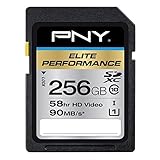
PNY Elite Performance 256GB High Speed SDXC Class 10 UHS-I, U1 Up to 90MB/sec Flash Card - P-SDX256U1H-GE
Up to 90MB/sec speed for the ultimate transfer rates
Price: $100.99
Price: $100.99
One thing to keep in mind is that new MacBooks don’t allow your SD cards to sit flush in the drive, which means full-sized SD cards (and microSD adapters) protrude from one side of your MacBook. Aesthetic objections aside, this isn’t ideal if you are likely to throw your MacBook in a tight-fitting bag, and could cause damage to both the port and SD card given a knock.
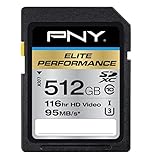
PNY Elite Performance 512GB SDXC Class 10 UHS-I, U3 Up to 95MB/sec (P-SDX512U3H-GE)
Up to 95MB/sec speed for the ultimate transfer rates
Price: $199.99
Price: $199.99
With a bit of care though, an SD card can offer serious storage at a relatively affordable price. You’ll want to shop for a card that offers fast read and write speeds (like the two examples above), and the good news is that you can now find 256 and 512GB cards for under $200.

If the protrusion really bothers you, you can opt for a specially designed adapter like the Nifty MiniDrive (from $29.99) or an all-in-one solution like the JetDrive (from around $65). The Nifty MiniDrive is an enclosure for microSD cards, which are generally more expensive and slower than full-blown SD cards (though prices fall and speed climbs over time). It’s the price you pay for a “flush” solution.
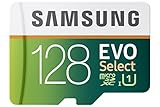
Samsung 128GB EVO Select Micro SDXC Memory Card, 80MB/s (MB-ME128DA/AM)
Up to 80MB/s transfer speed
Price: $39.99
Price: $39.99
If you do go for this option, there are a few things to keep in mind. If you’re a photographer or you frequently rely on your SD card slot, you’ll need to switch it out regularly which could be bothersome. You might also need to mount and unmount your drives to avoid pesky issues (there are reports of SD cards not mounting on startup), so you might want to use an app like Mountain ($5.99) to automate the process.
Bottom line: A cheap upgrade that offers decent transfer speeds, depending on what you spend. No hassle install, but you’ll have to make a trade-off between larger, faster, and cheaper SD cards or a solution that is more aesthetically pleasing.
Upgrade Your SSD
Assuming you’ve got a recent MacBook, the reason your available space is so small is because Apple shipped it with a solid state drive (SSD) rather than a mechanical hard disc drive (HDD). SSDs do away with moving parts, which means they’re much less fragile and considerably faster than older technology. By storing data in cells rather than platters, SSDs represent one of the most effective upgrades you can perform.
If you already have an SSD, you probably won’t notice much of a speed increase, but there’s a chance that larger drives are far more affordable than they were when you bought your notebook. As an example, you can get a 1TB drive for under $400 now. If you have a drive of around 128GB, you might only need to upgrade to a 512GB model to make a world of difference.
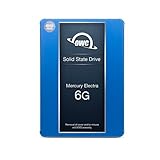
OWC 1TB Mercury Electra 6G SSD 2.5" Serial-ATA 7mm Solid State Drive
Compatible with nearly any Mac or PC with a Serial ATA connection (SATA, SATA 2.0, or SATA 3.0)
Price: $334.00
Price: $334.00
When it comes to storage, more is always better, and you can always recycle your SSD in other notebooks, desktops, or portable enclosures when your MacBook gives up the ghost — so we’d recommend buying the biggest capacity you can afford. Keep in mind that upgrading your storage involves opening your laptop enclosure, which will void any warranty you still have on your machine (including AppleCare).
Often you can buy upgrade kits which include everything you need to upgrade your laptop’s storage, including instructions and in some cases video resources. This guide on Instructables applies to most Apple laptops; though keep in mind there will be small differences in the models. Some retailers split their kits up by model and year, like Other World Computing, which makes it difficult to buy the wrong thing.
To perform an upgrade, you’ll need a new solid state drive, screwdriver set that matches your laptop, and a spare external drive or enclosure for your old drive so you can clone it. You’ll also want to take the recommended antistatic measuresthat apply to all computer upgrades.
Bottom line: The fastest storage upgrade you can perform, at a premium price point. An involved but relatively straight-forward installation process which will reward you with fast, native, hassle-free storage that goes everywhere you do.
Network Storage
Another option is to not add storage to your MacBook directly, but to leverage some of the storage you already have elsewhere in your home. This is probably the cheapest way of adding storage, as it’s often free and doesn’t require you to purchase anything.
There are some drawbacks with this approach though, and it largely depends on your network setup. A wired network will provide the most reliable speeds, though this caps out at 10Gb/sec from Cat 6 cable on the fastest network equipment you can buy. Most of us rely on Wi-Fi around the house for convenience though, and the actual speed you get will depend on signal quality — so even if your router is rated for 150Mb/sec, there’s no guarantee you’ll get that speed.

You’ll only be able to make use of network storage and the data therein when you’re sharing the same network. If you’re keen on this idea, there are a few ways to use network storage:
- You can repurpose your old Mac as a file server.
- Share your Windows PC’s storage with your Mac using standard network storage protocols.
- Use a Raspberry Pi as network-attached storage drive, or as a media server.
- Build your own NAS box with Linux.
- Do other cool things like backup Time Machine to a NAS box or Windows PC.
Bottom line: A mixed bag that’s cheap, with mixed speeds, that’s only available when you’re at home. Better network equipment and Cat 5e cable is a minimum requirement for speeds that top out at 1Gb/sec, while Wi-Fi will have you waiting around.
Cloud Storage
A bit of a last resort, you can always turn to the cloud for additional storage space. We’ve covered making a decision between network-attached storage and full-blown cloud services before, so be sure to do your research if you’re thinking of going down this route.
The biggest drawback using the cloud as a storage device is the speed, which is limited to whatever your internet speed is. Downloading files from the cloud may not be ideal if you’re a remote worker who makes heavy use of smartphone tethering, have some other kind of bandwidth restriction, or if you’re limited to slow shared networks. You’ll also probably need to purchase some storage to make this work for you.

You can opt for additional iCloud storage if you want to use features like iCloud Photo Library to store your original images, and keep only local “optimized” versions on your MacBook. This ensures you have access to images, with the option of downloading a full-sized original when you need it. You can also switch your music listening habits to a streaming solution like Apple Music or Spotify, and listen on-demand rather than keeping media on your local device.
If the cloud is an enticing option, keep your eyes on the upcoming macOS Sierra upgrade, due out in the fall. It includes a feature called Optimized Storage, which will analyze files you don’t use very often and store them in the cloud for you (iCloud space required). They will appear on your Mac as if they are stored locally, but you’ll need an Internet connection to download and access them.
Bottom line: A slow solution that requires an ongoing subscription in order to make the most of, but features like iCloud Photo Library and Sierra’s upcoming Optimize Storage feature can help bridge the gap between convenience and practicality.
A Roomier MacBook
The next time you make a new laptop purchase, keep in mind the importance of available space. While an opportunity to save some money may be enticing, you might spend half of your laptop’s lifetime shuffling files around and running out of space.
Whatever route you go down, don’t stop at expanding your storage — there’s a lot you can do to create free space on your Mac too.
How do you deal with limited space on your MacBook? Add your thoughts below.
Image Credits: CAT5e / RJ-45 (Justin), Source: www.makeuseof.com
No comments:
Post a Comment